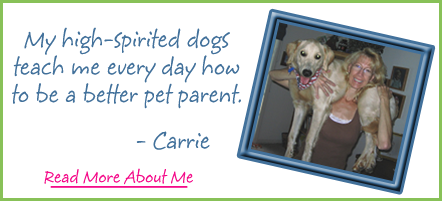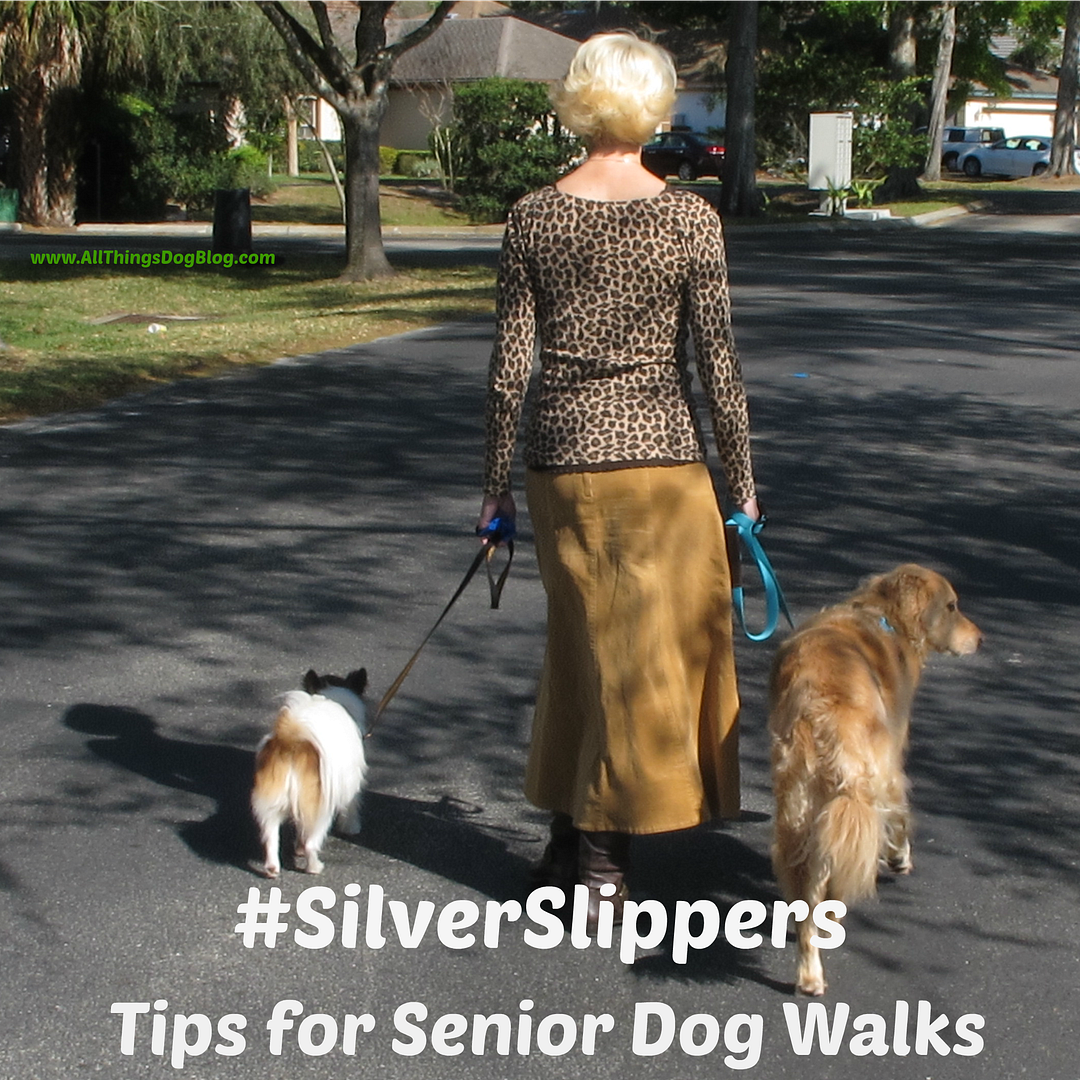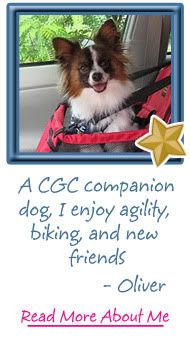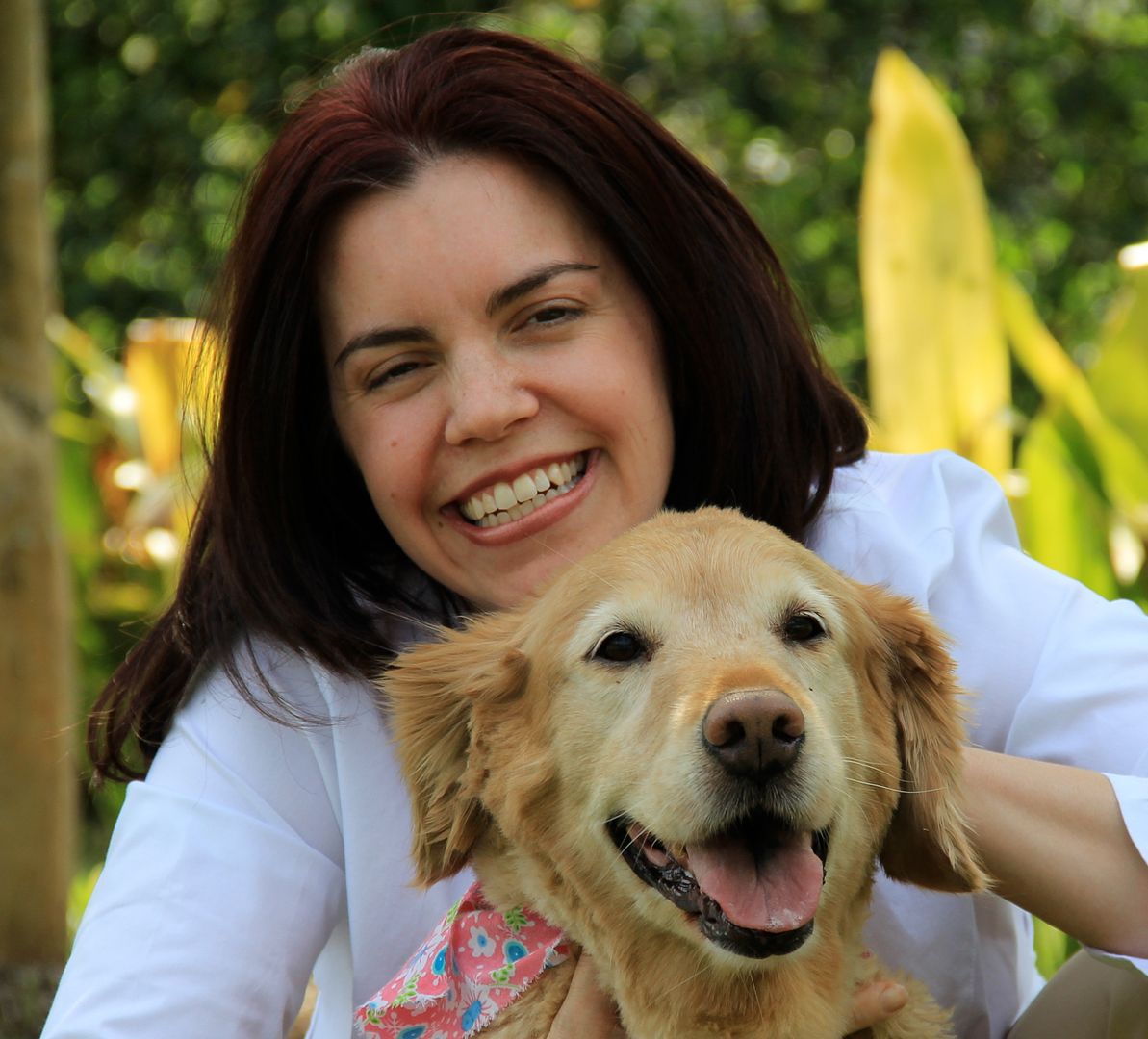 |
| © AllThingsDogBlog.com "Come Tanner!" |
I referred to this week's test as one of the most important skills your dog can learn. It could save his life. Take for example a simple walk down a busy road. Your dog is on leash and you're both enjoying the scents, scenes and exercise of the day. Suddenly a tractor trailer lurches to a halt beside you and frightens your dog. His collar or harness buckle snaps under the pressure from his excitement, and off he runs toward the road. How can you save him from an encounter with a front end? "Come Tanner!" That's how.
Teaching your dog to Come When Called in puppy class is not terribly difficult. Most dogs will be eager to run toward their most familiar and affectionate human in a group, especially if you are encouraging him with sweet talk, clapping, and perhaps even a yummy treat. In the traffic scenario I posed above, that sweet talk will have evaporated along with the treat. All you'll have left is clapping and an "I mean business" voice.
As your dog matures, this is a skill you'll want to practice in multiple venues. Anywhere you can put him out on a long leash (at least 20 feet), or even off-leash, you should give him a few chances to strut his stuff. And don't forget the treats. When training, these babies will keep Fido coming back for more, and that's the attitude you'll want if ever you experience a similar danger such as the traffic example above.
Throughout his life, this is a skill you need to continue to practice pretty much forever. If you have a highly social dog like my Tanner and Oliver, practice in places where there are lots of social opportunities. I rotate dog parks to give the boys new smells, new friends, and new experiences. When they get a good stretch away from me, I clap my hands and shout a firm (not mean, just all-business) "Oliver! Come!" Same thing for Tanner, and let me tell you, these years of practice have resulted in a continuing improvement in the response time.
I've stepped up their challenge by waiting till they are busy in a tag game, enjoying a neck rub from a park guest, or waiting eagerly at the water fountain. Then I shout my command and expect their response to always be a hearty, delightful jaunt back to see what Mom has for them.
At the dog park they get praise, affection and lots of petting and rubs. I need this response to be ever present, as we have had a few run ins with less than social dogs. Tanner, being the ultra dog's dog that he is, doesn't always understand the body language of another dog that appears to be saying "Back off buster; I like my space." That's when I sometimes step in and use the Come command to keep Tanner from incurring the wrath of this Fido who's not there to be the life of the party. I like the way our All Things Dog Blog's Ask the Dog Trainer columnist, Michael Baugh, phrases this action. He calls it "watching your dog's back". Very appropriate.
Oliver's favored socialization approach is to greet each and every human as though they are there only to tell him how cute he is and pet him with generous abandon. Honestly, he's not eager in these circumstances to come running back to me, but he IS highly food motivated. That has been the most important part of establishing a reliable Come When Called with Oliver.
The point of all these examples is to help you realize that you'll need to determine what your dog's motivators are, as well as understanding the distractions that will most likely trip him up. These are the areas you'll need to put the most training effort into. Pick your venues accordingly and practice frequently.
And never, no never, scold your dog when he does not come. That will completely defeat your purpose. Just keep practicing and always keep it highly positive when you get any effort on your dog's part. Once he gets the hang of it, you'll still have an occasional slip up. Ignore it and practice again later. Offer a higher value treat and more affection for his positive response this time.
Now, on to the test. This Come When Called test is not so big a deal as it should be, in my humble opinion. What you'll generally find is that the evaluator will ask you to Stay your dog, turn and walk away about 10-20 feet (the rules state 10). That's not far, but every dog has his limits on how much distance he's comfortable with between he and his handler.
Start the test by assuring your dog's stay is in the position he is most successful with. Use verbal and hand commands to emphasize your intention. If your dog has a tentative Stay, walk slowly away. A brisk walk may encourage Fido to follow. You likely won't be given a second chance, so make it count.
When the evaluator tells you to stop (it's supposed to be about 10 feet, but I have seen much longer distances), stop on your back foot, rotate and use every ounce of enthusiasm you can muster to encourage your dog to Come immediately. What works best? Kissy noises, clapping, sweet talk or all-business talk, make sure you're using the most-successful approach to get the results that you want. No treats are allowed during the test, so you've got to get Fido's attention on you and get him moving fast. The evaluator will only give him a brief time to get moving toward you, and will frequently expect the dog to complete his journey allowing contact between you and Fido. Follow through with a hearty reaction.
Finally, if your dog is slow to get moving, has hip issues or other mobility challenges, I'd give him a chance to learn his Stay in the standing position. Less effort to get the motor running may work in your favor. Make eye contact when you offer the Come command and keep your eyes on your dog all the way to meet you.
 Even if you're not planning to train for the CGC, I highly recommend you work on this command. If it saves one dog, it's worth all of our efforts. Join me next Saturday for another tough session: Reaction to another dog, which simulates meeting a dog and its handler while out on a walk--approaching face to face.
Even if you're not planning to train for the CGC, I highly recommend you work on this command. If it saves one dog, it's worth all of our efforts. Join me next Saturday for another tough session: Reaction to another dog, which simulates meeting a dog and its handler while out on a walk--approaching face to face.Comments? Click the Weekly Wag button to leave your thoughts, ideas or questions. This will also enter you in a quarterly drawing for September 30. Best wishes in your training.
Catch up on the earlier parts of this series here:
Introductory Tips to Getting the Canine Citizen Certification
CGC Test 1: Accepting a Friendly Stranger
CGC Test 2: Sit Politely for Petting
CGC Test 3: Appearance and Grooming
CGC Test 4: Walking on a Loose Leash
CGC Test 5: Walking Your Dog Through a Crowd
CGC Test 6: Sit/Stay or Down/Stay
Join us each week for the Weekly Wag bonding series, held during the Saturday Pet Blogger Hop. The hop is hosted by Life with Dogs, Two Little Cavaliers, and Confessions of the Plume. You are welcome to link up here, or check any of their sites for their rules of participation. Happy hopping!











































5 comments:
Jessica @ YouDidWhatWithYourWeiner said...
Gretel has a pretty decent recall. It is still not 100% though. Besides safety, it is a good idea to teach your dog this merely for the fact that it can be frustrating if your dog will not come. You don't want to have to walk over and pick them up every time (my dogs are small) :)
This is a Joke said...
LOL....I won't be picking up Tanner at 70 lbs., so I guess that gives me an even greater motivation to keep practicing. This morning I called him away from a swim in the pool--his greatest love. I knew this was a risky one that may fail, but sure enough he bounded out and romped over to me, wondering what the H could be more important than swimming. Wow, was I proud. Too bad the camera didn't capture it :)
Anonymous said...
Hey Tanner, Hey Oliver, Jet here. Hi Miss Carrie.
Oh boy, what impressive skills yet again... I really want to pay attention to my comment, but, it just started to absolutely pour and I'm distracted!
Sew Doggy Style said...
So true. Sebastian is great at listening to me for the most part, but I just can't get him to stop chasing cats/squirrels. He will "come" on command unless a cat is in sight. Actually, reading your post has motivated me to brush up on some commands today so thank you for that.
xoxoxoxo,
Erika and Sebastian
Dawn said...
So very important! Years ago I watched in horror as my dog Becky Anne got hit by a pickup. She ran away like the wind afterwards and I screamed for her to come, afraid she was going to get hit by another car. She actually turned right around and came back. I was amazed. I was sure her terror was going to keep her running. Becky Anne had some scrapes and bruises from the accident but was otherwise okay, thank goodness. And thank goodness for the come command!
Post a Comment